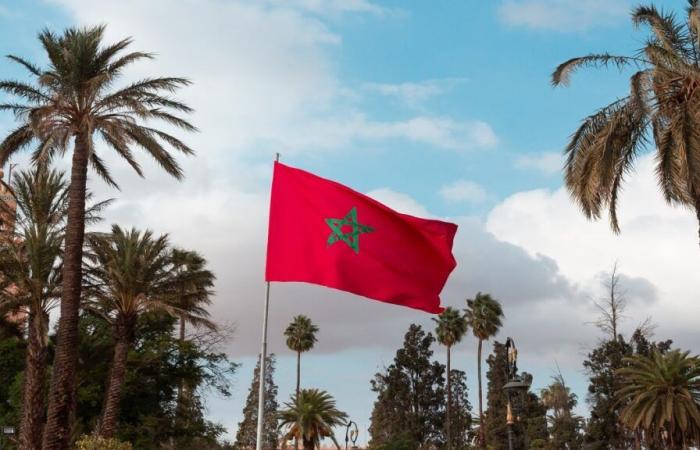After cereals and olive oil, it is the turn of citrus production to collapse in Morocco. The reason is the drought but also the uncertainties on the export markets to the European Union and Russia.
A drought that could benefit South African producers. Last April Jan Rozema of the SFI import company in Rotterdam told the media Fresh Plazza: “The early end of the citrus season in Spain and Morocco offers prospects for South Africa”.
For its part, under the title: “Mediterranean citrus fruits: another year of marked deficit in Spain and Morocco”, the Fruitrop.com site noted in October 2023: “A significant deficit in the harvest is also expected in Morocco, both in clementine than orange, temperatures having been abnormally high particularly in the south of the country.
From January to August 2023, Morocco’s citrus exports were only 30,000 tonnes compared to 109,000 tonnes the previous year according to HuffPost.
For his part, Yevhen Kuzin, fruit and vegetable market analyst at EastFruit, warned: “According to our calculations, Moroccan orange exports for the 2022/23 season will fall to the lowest level in at least 8 years.”
A situation felt even in Russia and which led the Russian ambassador to Morocco to justify himself to the Muscovite press following the early disappearance of his country’s market for Moroccan clementines.
Competition from Turkey and Egypt
The Moroccan Interprofessional Citrus Federation (Maroc Citrus) is the first to sound the alarm. It indicates that if annual exports of citrus fruits are on average 650,000 tonnes for a value of 3 billion dirhams (nearly 300 million euros), these sales are declining, particularly to Russia.
About ten years ago, Morocco held a third of the Russian market. Today, these exports are falling by 5 to 6% each year according to Irina Koziy of the Fruitnews press agency. Comments widely taken up by the press in Morocco.
A leading position occupied today by Turkey on the Russian citrus market.
Morocco’s citrus exports face competition from Turkey but also from Egypt and Spain.
Irina Koziy also mentions other causes: “Due to sanctions and political tensions, deliveries of Moroccan mandarins, especially the popular clementine variety, have almost stopped.”
Moroccan exporters are also worried about possible payment difficulties due to Western sanctions against Russia following the war in Ukraine.
At the beginning of 2022, Russian banks were excluded from the SWIFT banking system. This led Kacem Bennani Smires, the president of the Association of Citrus Exporters of Morocco to reveal that “the big concern remains that several outstanding balances have not yet been settled”. Added to this is the drop in the value of the ruble which penalizes exporters.
Spain fighting competition from Morocco
Another blow for Moroccan exporters is that the European Union has recently become willing to require cold treatment for all imported citrus fruits. A treatment which aims to protect against parasitic insects which may accompany imported fruit and contaminate European orchards.
A measure demanded by Spanish professionals including Carlos Mazon, president of the powerful Generalitat Valenciana, and which should mainly target Morocco.
Janusz Wojciechowski, the European Commissioner responsible for agriculture, would have responded favorably to the requests of the Spanish citrus industry. This measure is already applied for oranges coming from South Africa, due to the presence of the orange moth or false codling moth.
According to FreshPlazza which relays the Spanish press, this measure would also have had the effect of leading to “a reduction in imports to Europe”.
A result that Spanish producers who face strong competition from non-EU citrus imports, including those from Morocco, are not unhappy with.
A structural lack of water
On several occasions, the expert Mohamed Tahar Sraïri specializing in irrigation issues had the opportunity to highlight the contradictions of the Moroccan agricultural model centered on the export of water-intensive crops.
In January, he mentioned in Le360 that the avocado tree and the date palm “require respectively between 1,600 and 2,000 millimeters of water per year”.
However, he pointed out, the avocado tree was massively planted in regions receiving an annual average of only 400 to 500 mm of rain. As for palm trees, plantations are carried out outside oases in regions that receive only an annual average of 200 mm of rain. These plantations only survive with the help of continual withdrawals from groundwater.
The expert notes that the situation is quite similar regarding citrus fruits. Plantations were carried out in relatively arid areas in the Oriental or Souss-Massa where the annual averages do not exceed 200 mm of rainfall while these trees have irrigation needs of around 1,000 and 1,200 mm. .
The European wholesaler Lukassen AGF, accustomed to sourcing from Morocco, is worried. He told the trade press: “This too is becoming more and more difficult and expensive. A few years ago, it was enough to dig 40 meters deep to reach water; today, you sometimes have to go as deep as 200 or 300 meters. »
The lack of water is a situation also experienced by citrus producers in Mohammedia in Algeria due to the siltation of the Fergoug dam or those of Cap Bon in Tunisia faced with overexploitation of the groundwater table which has become salty due to the intrusion of sea water.
Drought, competition from Turkey, protective measures demanded by Spanish producers, fragility of the Russian banking system, Morocco’s citrus exports are facing headwinds. Difficulties that all producers in Maghreb countries wishing to establish themselves on European markets should consider.






